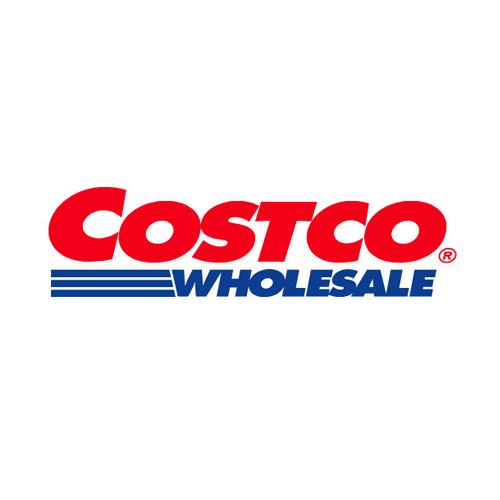Think Costco's bulk sizes mean you're destined for food waste? Think again! With the right storage strategies and meal planning tricks, you can turn those warehouse-sized packages into serious savings without tossing a single expired item. The secret isn't avoiding bulk purchases—it's mastering smart storage and rotation systems that keep everything fresh and accessible.
Smart shoppers know that bulk buying success starts before you even walk through those warehouse doors. Before you stock up, check Groupon's latest Costco discount codes for extra savings. But the real money-saving magic happens when you get home and put these storage strategies to work.
Smart Costco Shopping Strategies That Prevent Waste
The most successful bulk buyers don't wing it—they plan like pros. Create a simple tracking spreadsheet to be your secret weapon against food waste. Track what you buy, when you bought it, and how quickly your family uses it up. This insider trick helps you spot patterns and avoid overbuying items that tend to go bad before you can use them.
Focus your bulk buying on pantry staples and freezer-friendly items for the best value. Rice, pasta, canned goods, and frozen vegetables are your friends here. These items have long shelf lives and won't leave you scrambling to use them up before they expire. Plan your meals around these bulk ingredients before you shop, not after you get home with a cart full of good intentions.
Here's a pro tip: shop with a list organized by storage method. Group freezer items, pantry staples, and fresh goods separately. This helps you visualize how much storage space you'll need and prevents impulse purchases that might overwhelm your organization systems.
Freezer Organization Hacks for Costco Bulk Buys
Your freezer is your best friend when it comes to bulk buying without waste. Create zones for different food types—dedicate one area for proteins, another for vegetables, and a third for prepared meals. This simple system lets you see your inventory at a glance. No more items getting buried and forgotten in the back.
Portion out bulk items into single-serve containers as soon as you get home. That massive bag of chicken breasts becomes individual meal portions. The giant container of soup becomes perfect lunch-sized servings. This strategy makes meal prep a breeze and helps you use exactly what you need without defrosting more than necessary.
The Science of Safe Freezer Storage
Here's something that might surprise you: food stored constantly at 0°F will always be safe to eat1. Only the quality degrades over time, not the safety. This means those frozen vegetables you bought six months ago are still perfectly safe to use, even if the recommended storage time has passed. Frozen foods stored at 0°F or below can be kept indefinitely for safety purposes2.
Label everything with dates and contents using freezer-safe labels. While safety isn't a concern with properly frozen foods, quality is best when items are used within recommended timeframes. Most frozen vegetables maintain peak quality for 8-12 months. Frozen meats can stay at their best for 4-12 months depending on the cut.
Pantry Storage Solutions That Keep Food Fresh
Airtight containers are non-negotiable for bulk pantry items. They maintain freshness, prevent pests, and help you see exactly how much you have left. Transfer items like rice, pasta, flour, and cereal into clear, airtight containers as soon as you get home. This simple step can extend shelf life significantly and prevent those frustrating discoveries of stale or pest-damaged food.
Install can storage organizers to prevent items from getting lost in the back of your pantry. These simple racks ensure older cans naturally move to the front while new purchases go to the back. It's a passive way to maintain proper rotation without thinking about it every time you put groceries away.
Store bulk items in cool, dark, and dry locations for maximum shelf life. Basements, interior closets, or lower kitchen cabinets away from heat sources work best. Avoid storing food near stoves, dishwashers, or in areas that get direct sunlight. Heat and light can degrade quality faster than you'd expect.
Master the FIFO Method for Zero Food Waste
The "First-In, First-Out" (FIFO) method is restaurant industry gold, and it works just as well in home kitchens. When you bring new purchases home, always place them behind older items. This ensures you naturally use older products first and prevents items from expiring before you get to them.
Make FIFO foolproof by labeling containers with purchase or expiration dates. Use a permanent marker or label maker to mark dates clearly on containers, cans, and packages. When you're deciding what to cook for dinner, a quick glance at dates helps you prioritize items that need to be used soon.
Create a "Use First" Zone
Designate a specific area in your pantry and freezer for items that need to be used soon. This visual reminder helps you incorporate these ingredients into your meal planning before they go bad. Check this zone weekly when planning your grocery list and meals.
Essential Storage Equipment for Bulk Shopping Success
Invest in a vacuum storage system to keep bulk food fresh longer. These systems remove air that can cause freezer burn and staleness, significantly extending the life of your bulk purchases. While the upfront cost might seem high, the money you'll save by preventing food waste makes it worthwhile for serious bulk buyers.
Choose quality airtight containers in various sizes for pantry organization. Look for containers with tight-fitting lids and clear sides so you can see contents and quantities at a glance. Stackable designs maximize storage space and keep your pantry looking organized and accessible.
Consider freezer-safe portion containers for meal prep success. Having the right containers makes it easy to portion out bulk purchases immediately, which is key to preventing waste. Look for containers that stack well and are microwave-safe for easy reheating.
Maximize Your Costco Membership Value
Costco's Executive Membership offers a 2% annual reward on qualifying purchases, which can add up quickly when you're buying in bulk regularly. If you're spending enough to make the upgrade worthwhile, this reward can help offset the cost of storage containers and organization systems.
When considering whether an Executive vs Gold Star membership makes sense for your household, factor in your bulk buying habits. Heavy bulk buyers often find the Executive membership pays for itself through the annual reward.
Take advantage of Costco's recipe videos for meal planning inspiration. These resources can help you build meals around bulk ingredients you already have, reducing waste and maximizing the value of your purchases. Plus, Costco's 100% satisfaction guarantee4 means you can try new bulk items with confidence, knowing you can return anything that doesn't work for your family.
For those wondering if a Costco membership worth it for smaller households, the storage strategies in this guide can help even single-person households benefit from bulk buying without waste.
FAQs
Do you have to buy in bulk at Costco?
No, you don't have to buy everything in bulk at Costco. While many items come in larger quantities, you can choose which products make sense for your household size and storage capacity. Focus on non-perishables and items you use regularly.
Does buying in bulk reduce waste?
Buying in bulk can reduce packaging waste and trips to the store, but it only reduces food waste if you have proper storage systems and meal planning in place. Without good organization, bulk buying can actually increase waste.
How long can you safely store frozen foods?
Frozen foods stored at 0°F or below remain safe indefinitely. Quality may decline over time, but properly frozen foods won't become unsafe to eat. For best quality, use frozen vegetables within 8-12 months and frozen meats within 4-12 months.
What's the best way to organize a pantry for bulk items?
Use airtight containers for dry goods, install can organizers for canned items, and implement the FIFO method by placing new items behind older ones. Label everything with dates and create designated zones for different types of food.
Is Costco Executive Membership worth it for bulk shoppers?
Executive Membership can be worthwhile for frequent bulk shoppers due to the 2% annual reward on purchases. Calculate whether your annual spending would generate enough rewards to offset the higher membership fee.
Bulk Buying Success Checklist
- Create a tracking spreadsheet for purchases and usage patterns
- Organize freezer into zones for different food types
- Portion bulk items into single-serve containers immediately
- Transfer pantry items to airtight containers
- Install can organizers for automatic rotation
- Label everything with purchase or expiration dates
- Implement FIFO method for all stored items
- Create a "use first" zone for items nearing expiration
- Plan meals around bulk ingredients before shopping
- Invest in quality storage equipment for long-term success
Start Your Waste-Free Bulk Buying Journey
Ready to transform your Costco shopping from potential money pit to savings goldmine? These storage strategies and organization systems can help you maximize every bulk purchase while keeping your kitchen organized and your family well-fed. Before your next warehouse run, explore Groupon's Costco discount codes to stretch your budget even further. You can also check out Costco membership deals if you're ready to join the bulk buying revolution.
- Freezing and Food Safety — USDA Food Safety and Inspection Service
- Cold Food Storage Chart — FoodSafety.gov
- Why Become A Member — Costco
- What is Costco's return policy? — Costco

















